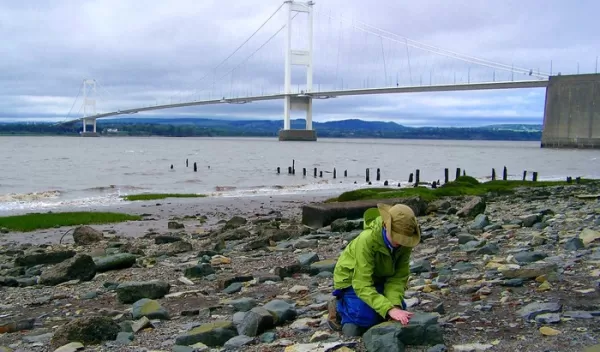
Microplastic pollution lingers in rivers for years before entering oceans
Microplastics can deposit and linger in riverbeds for as long as seven years before washing into the ocean, a new study has found. The research was supported in part by the U.S. National Science Foundation.
Because rivers are in near-constant motion, researchers previously assumed that lightweight microplastics quickly flowed through rivers, rarely interacting with riverbed sediments.
Now, scientists at Northwestern University and other institutions have found that hyporheic exchange -- a process in which surface water mixes with water in the riverbed -- can trap lightweight microplastics that otherwise might be expected to float.
The study was published in the journal Science Advances. It marks the first assessment of microplastics accumulation and residence times in freshwater systems, from sources of plastic pollution throughout the entire water stream. The new model describes processes that influence particles, including hyporheic exchange, and focuses on hard to measure but abundant microplastics at 100 micrometers in size and smaller.
"Most of what we know about plastics pollution is from the oceans because it's very visible there," said Northwestern's Aaron Packman, one of the authors of the study. "Now we know that small plastic particles, fragments and fibers can be found nearly everywhere. Our work shows that a lot of microplastics from urban wastewater end up depositing near the river's source and take a long time to be transported downstream to oceans."
To conduct the study, the scientists developed a new model to simulate how individual particles enter freshwater systems, settle and then later remobilize and redistribute.
The model is the first to include hyporheic exchange processes, which play a significant role in retaining microplastics within rivers. Although it is well-known that the hyporheic exchange process affects how natural organic particles move and flow through freshwater systems, the process is rarely considered in microplastic accumulation.
Using the new model, the researchers found that microplastic pollution resides the longest at the source of a river or stream, known as the headwaters. In headwaters, microplastic particles moved at an average rate of five hours per kilometer. But during low-flow conditions this movement slowed to a creep -- taking up to seven years to move just one kilometer. In these conditions, organisms are more likely to ingest microplastics in the water, potentially degrading ecosystem health.
"Scientists are just learning to predict where these tiny remnants of the synthetics industry are hidden in riverbeds, and how long they will stay around," said Justin Lawrence, a program director in NSF's Division of Earth Sciences. "These findings beg the question of what other unknowns rivers conceal, and what the consequences are for life in rivers and streams."


